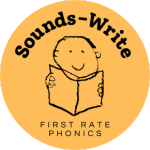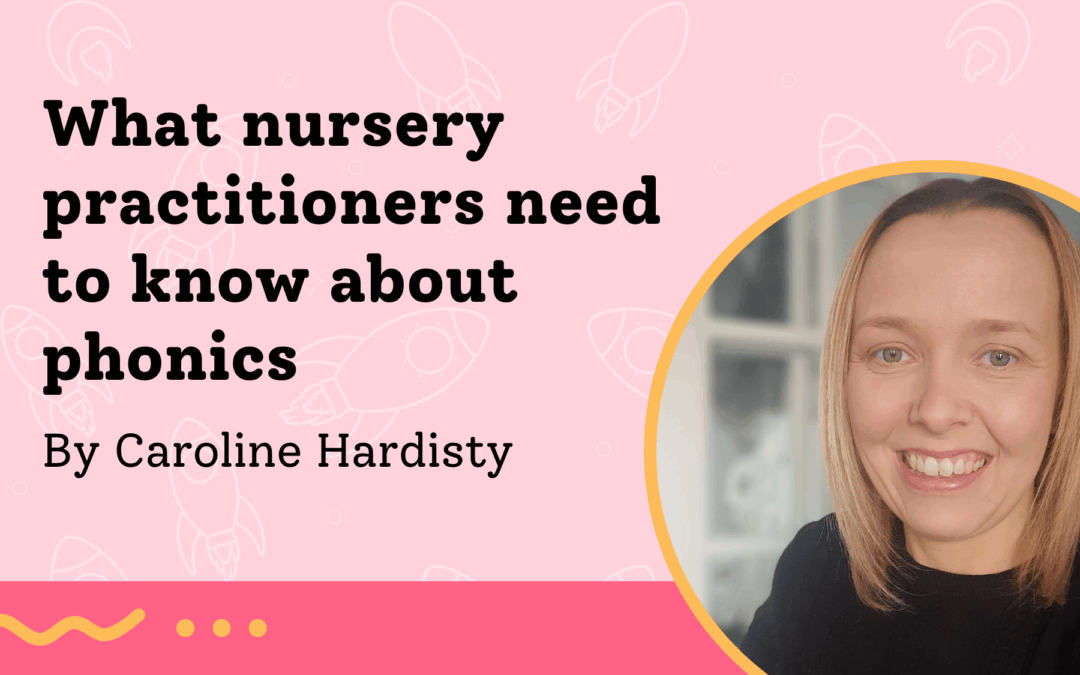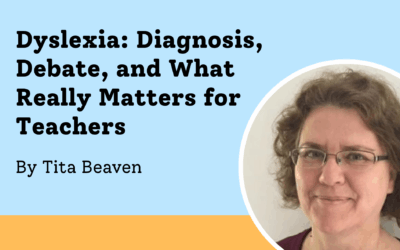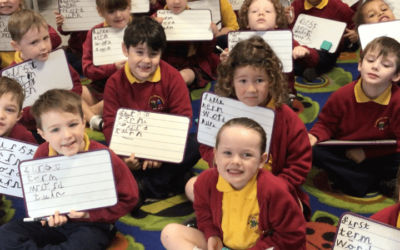Laying the Foundations for Reading Through a Speech-to-Print Approach
In nursery settings, practitioners do much more than help children socialise and play—they lay the crucial foundations for their future reading success. One of the most important things early years educators should understand is how spoken language connects to written language. This is where a speech-to-print approach to phonics makes so much sense.
Jump to section
1. What is speech-to-print phonics?
2. Why phonemic awareness matters
3. When to introduce letters and spellings
4. Getting nursery children ready for phonics
5. Balancing play, language and early phonics
6. A final word
What is speech-to-print phonics?
Unlike traditional print-to-speech phonics, which often begins with teaching letters and the sounds they “make” in isolation, usually through the use of flashcards, speech-to-print phonics starts with what children already know—spoken language. It focuses on helping children break down the words they hear and say into individual sounds (phonemes) and then teaching them the spellings that represent those sounds, always in context of real words.
This approach makes learning more meaningful. Children begin with real words that carry meaning for them, rather than isolated sounds or letters that may seem abstract.

They learn that the words they say can be pulled apart into sounds and that those sounds have written representations. These representations or spellings (graphemes) made up of single letters or letter combinations spell sounds.
It’s important to be precise with our language: graphemes represent or spell sounds—they don’t “say” them. The written symbols themselves are silent; we, as speakers, produce the sounds.
One important aspect of a speech-to-print approach is that it’s grounded in the approximately 44 sounds (phonemes) of spoken English and gradually introduces the 175 or so most common spellings (graphemes) that represent them. While this process unfolds over two to three years, nursery is the perfect time to begin by tuning children into the sounds they already hear and use every day.
Why phonemic awareness matters
Children need to develop phonemic awareness—the ability to hear, identify, and manipulate the individual sounds in words. This is the most critical early skill linked to later reading success.
Phonemic awareness is distinct from general phonological awareness (which includes rhyming, syllables, and alliteration). It focuses specifically on recognising that a word like sit is made up of three sounds: /s/ /i/ /t/.
Research shows that explicit phonemic awareness instruction, especially when paired with systematic phonics, leads to significantly better reading outcomes (Ehri et al., 2001).
Getting nursery children ready for phonics
At the start of the nursery phase, children are not yet reading and writing—but practitioners are laying the groundwork for that journey. A language-rich, play-based environment helps them develop the skills they’ll need later. Some of the most effective activities include:
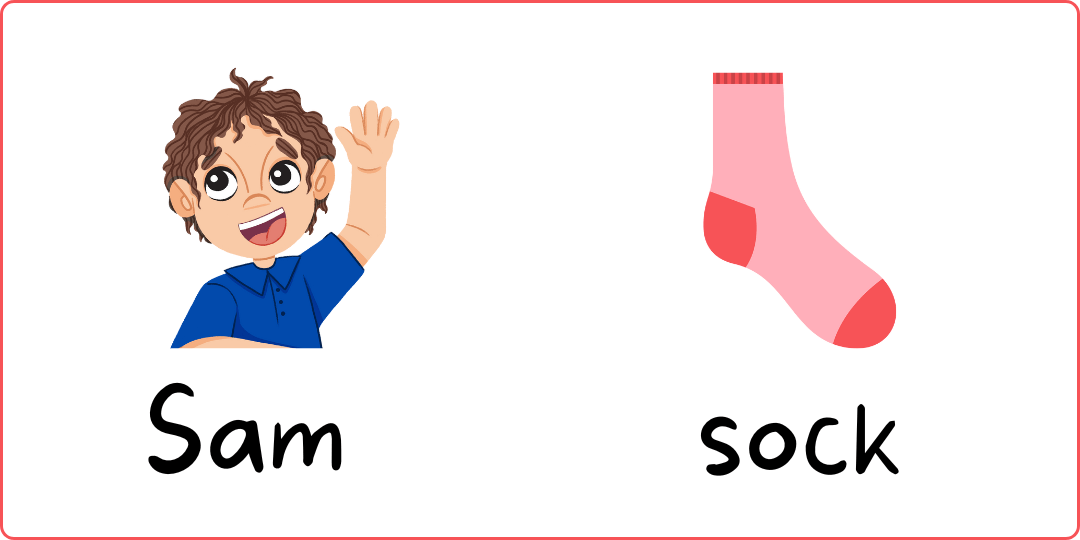
- Clapping out syllables in names and words
- Identifying the first sound in their names or words like sock.
- Playing with alliteration: “Silly snakes slither silently”
- Singing nursery rhymes and songs
- Listening to and retelling stories
- Playing games like: “Can you guess the word? /m/ /a/ /t/”
This doesn’t mean sitting still with worksheets. It means tuning into sounds through movement, play, and conversation—all embedded in joyful, everyday routines.
When to introduce letters and spellings
Usually in the final term of nursery—before children enter Reception—many will be ready to begin making links between the sounds they can hear and their written representations.
In a sound-to-print classroom, you’ll notice:
- Spellings are introduced within real words, not in isolation.
- Practitioners say a word aloud, guide children to listen to the sounds, then build the word using letters that spell those sounds.
- Children blend sounds aloud to read and segment words to spell.
- Sound-spelling correspondences are always taught in the context of speech.
- Everyone is careful to say sounds precisely—saying /m/, not ‘muh’.
For example, during a lesson, the practitioner might say a word, ask the children to listen to the sounds, then help them build the word using spellings. Finally, the children would blend the sounds to read it. This routine helps make the sound-to-print connection concrete and logical.
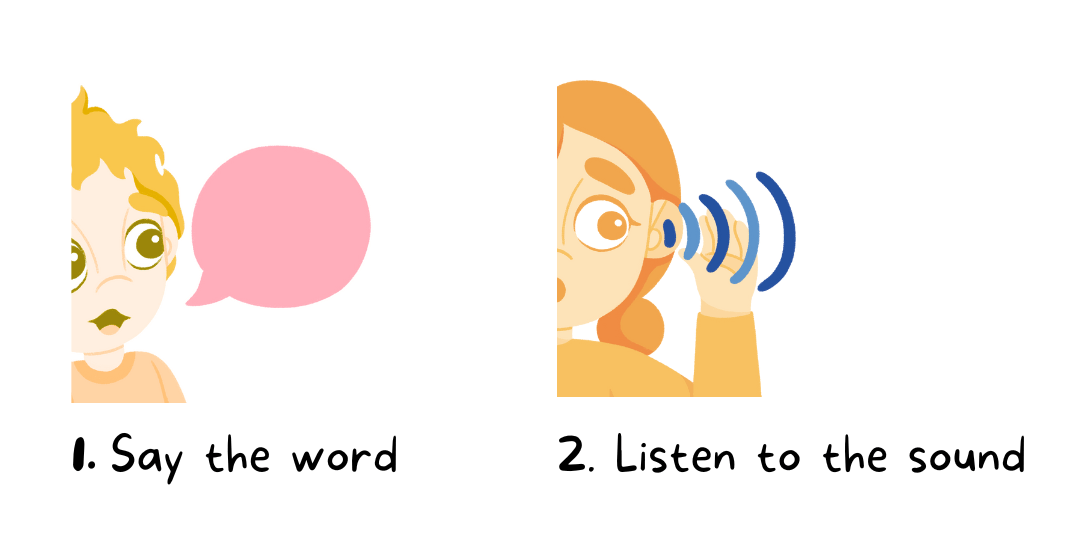

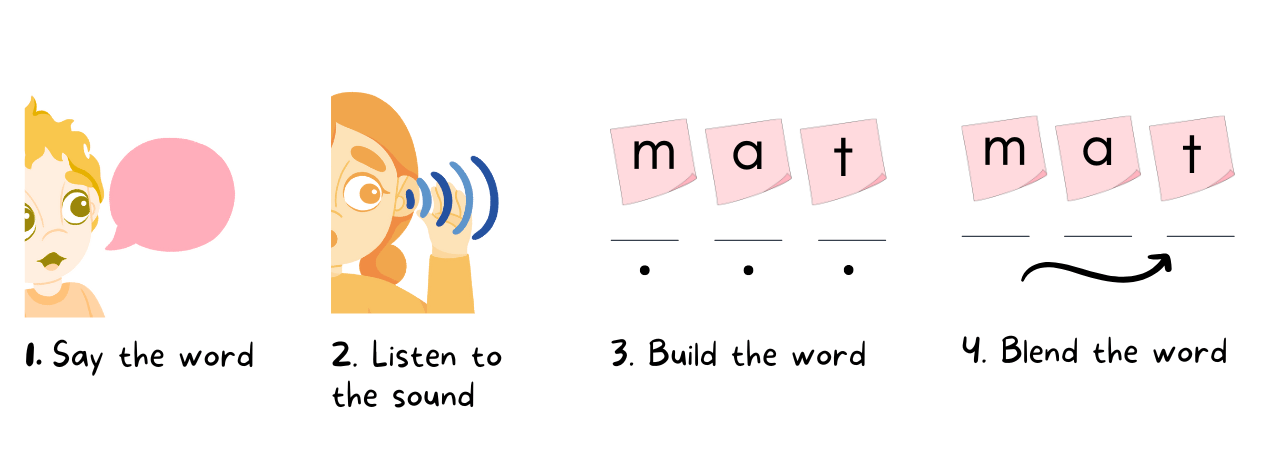
Balancing play, language, and early phonics
A common concern is that introducing phonics too early might interfere with play or language development—but in high-quality nursery settings, these elements work hand in hand.
- Play-based learning supports oral language, attention and thinking skills
- Storytime and conversations build vocabulary and comprehension
- Songs and rhymes develop sound awareness in fun, memorable ways
- Sound-focused activities help children ‘tune in’ to the building blocks of language
- Introducing phonics gently in the final term helps children make confident first steps toward reading

This isn’t about pushing formal reading lessons too soon. It’s about creating a rich, intentional environment where children explore sounds, develop strong language skills, and begin connecting speech to print—so they’re well-prepared when phonics teaching begins in earnest in Reception.
A final word
Nursery practitioners are not just caregivers—they are children’s first guides into the world of language and literacy. By weaving speech-to-print principles into everyday routines, they lay the foundations for confident, successful readers.
Keep reading, singing, talking, and playing—but also begin gently introducing phonics when children are ready, especially in the final term. Helping them tune into the sounds of speech and begin linking those sounds to spellings sets them up brilliantly for Reception and beyond.
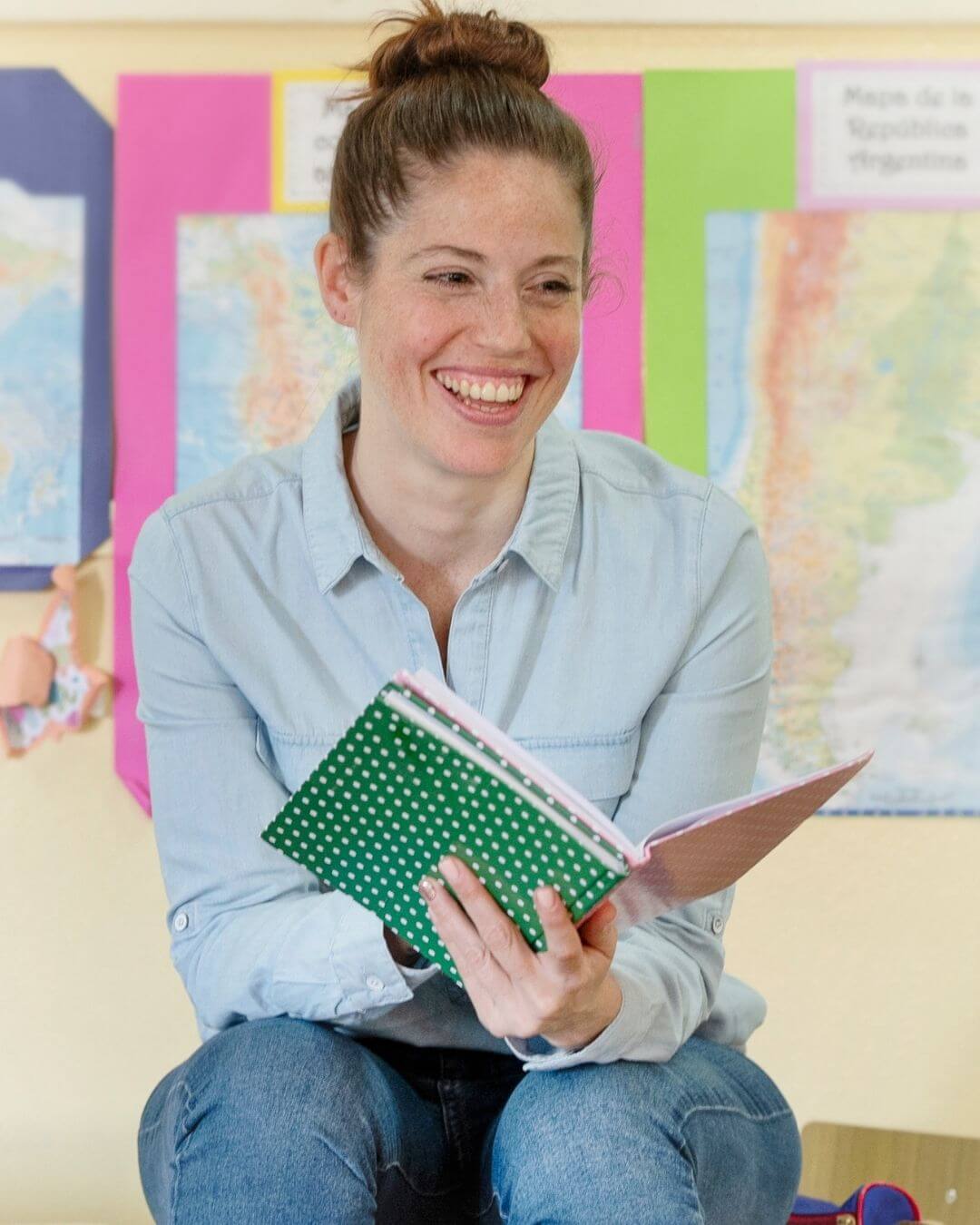
✅ 5 key takeaways for nursery staff
- Start with Speech
A speech-to-print approach begins with children’s spoken language, which they learn naturally, and introduces reading and spelling in the context of real words. - Phonemic Awareness Is Foundational
The ability to hear and manipulate individual sounds in words (phonemic awareness) is one of the strongest predictors of later reading success. - Meaningful, Play-Based Activities Matter
Clapping syllables, singing songs, and playing with rhymes and alliteration help develop children’s listening and sound discrimination skills in joyful, age-appropriate ways. - Start Phonics Gently in Nursery
Phonics can begin in nursery: by the final term, children will be ready to explore how the sounds they hear in words connect to letters. Introducing this in a developmentally appropriate way helps build confidence and prepares them well for Reception. - You’re Laying the Literacy Groundwork
Nursery practitioners play a vital role in preparing children for reading—by creating a language-rich environment.
💬 5 Reflection and discussion points for staff CPD
- How often do you draw children’s attention to the sounds in spoken words during your daily routines (e.g., snack time, story time, outdoor play)?
- Are you confident in your own understanding and use of precise pronunciation when modelling sounds (e.g., avoiding /muh/ for /m/)? Do you need more training or practice in this area?
- What opportunities do you currently offer for children to explore rhyme, rhythm, and alliteration through play and storytelling? Could you build on these?
- How can you introduce early phonics in a way that feels natural and playful, while ensuring you support children who are ready to begin linking sounds to letters in their final term of nursery?
- Are you using consistent, accurate language when talking about letters and sounds (e.g., “this letter spells /s/” rather than “this letter says ‘sss’”)? How can you support each other to stay aligned?
Sounds-Write in the Early Years course
Whether you’re new to phonics or looking to deepen your expertise, the Sounds-Write in the Early Years course provides early years practitioners with the tools to spark a lifelong love of reading in children. Grounded in the Science of Reading, it offers practical strategies, ready-to-use lessons, and guidance to build children’s language and phonemic awareness.
Give your learners the best possible start—enrol today and help them get ready for phonics success as they transition into school with confidence
You may also like...
The Phonics Screening Check 2025 (England): Our Analysis
In this post, Sounds-Write's Founder and CEO John Walker examines the structure of the Phonics Screening Check 2025, highlights patterns and potential points of confusion, and offers guidance on how teachers can use this insight to better support early readers. You...
Dyslexia: Diagnosis, Debate, and What Really Matters for Teachers
This blog post was inspired by Professor Joe Elliott’s keynote: “Rethinking Dyslexia: From Diagnostic Labels to Evidence-Based Reading Support” at the Sounds-Write Symposium 2025. His thought-provoking presentation challenged many of the assumptions we often make...
Announcing Our New Annual Membership: Flexible, Affordable Phonics Training for Your Whole School
We’re excited to share a major development at Sounds-Write—our brand-new annual membership, launching in September 2025. The membership will be available in the UK and the rest of Europe, and to any international schools following an English curriculum. “The...
